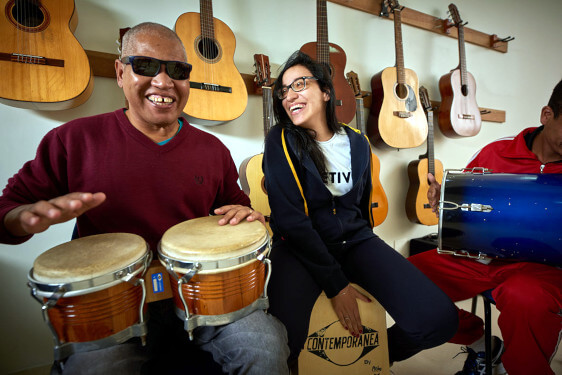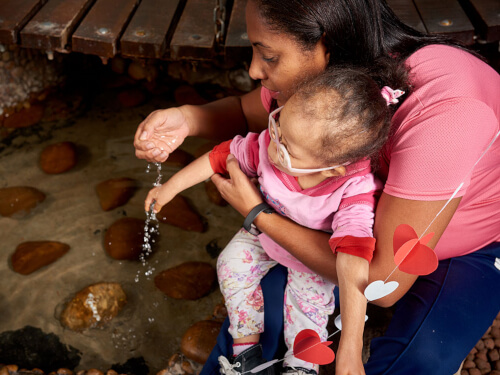
The union of our experienced and talented professionals, added to the determination and partnership of the families, solidify the essence of our Care Center for the Visually Impaired. This joint work constitutes an environment of opportunities to promote the development of people with visual impairments, in different sociocultural, care, educational and psychosocial perspectives.
This unit is divided in two sectors:
– Specialized Assistance Program for Children and Adolescents (CTO): from zero to 20 years and 11 months.
– Specialized Assistance Program for Young People and Adults (PROCEJA): as from 15 years old.
We are installed in an area of about 10 thousand square meters, divided into three buildings. The architectural project was designed to meet the specific needs of people with visual impairments, whether blindness or low vision. This is a reference space for creating accessible environments, as well as for projects that aim to adapt existing buildings.
All areas of the institution have signage with tactile flooring, with doors, cabinets and materials identified in Braille and in enlarged types, as well as representational objects. In our common area: the Family Integration and Coexistence Center, the Specific Resource Center – with assistive technology resources, the Autonomous Living Activities house, the visual arts studio, auditorium, recreational space, swimming pool and 35 meeting rooms for direct service to users.
In more than 30 years of operation, we have served more than 12,200 families in Brazil and abroad. Currently, just over 600 children, youth and adults are integrated into one of our programs. Today we have 295 employees, 13 of whom are visually impaired, and we also have the support of volunteers in each of our projects.
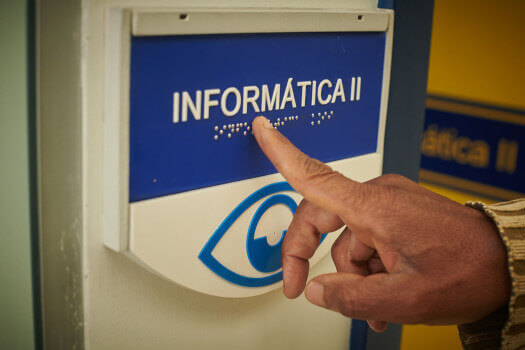
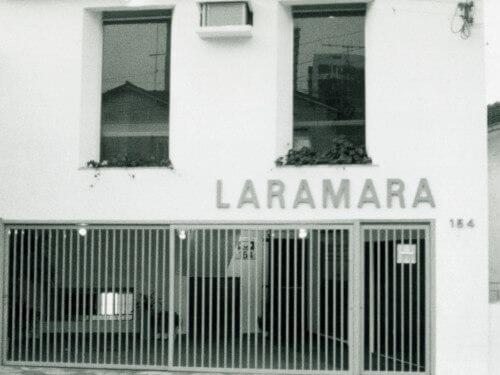
Founded on September 7, 1991, by the couple Mara and Victor Siaulys, Laramara were born in São Paulo, in the Pompéia district. The first house was at home: as a child, Mr. Victor had lived in this house and donated it to start this work of dedication and attention.
This dedication was born with little Lara, the couple’s daughter. Diagnosed with retinopathy of prematurity, Ms. Mara and Mr. Victor seek institutions and professionals to carry out the treatment and rehabilitation of Lara. Thus began the comprehensive research on blindness and visual impairment, as a means to understand and learn about the reality of this person, their families and their world.
This research, together with Lara’s treatment, led Ms. Mara to study pedagogy and a specialization in Visual Impairment at the University of São Paulo – USP. With this daily report, their interest in expanding this experience and knowledge in the form of care for the most vulnerable, the couple brought together a group of professionals working in the field of visually impaired people to found Laramara. The name is the junction of the name of the daughter – Lara – and the mother – Mara.
The coexistence in health institutions, the exchange of experiences with families and people with visual impairments and the daily evolution of Lara, allowed Ms. Mara to perceive a need to interact and play for the children.
From her experience at Santa Casa de Misericórdia, Ms. Mara became increasingly involved with the cause. He spent eight years working at Santa Casa, in which he got to know the different reality of countless families. Among the obstacles faced by these families, she noted the inexistence or precariousness of specialized services, lack of early intervention, lack of support and support for families and the inclusion of children in the school and community system.
Mr. Victor closely followed the volunteer work at Santa Casa, making himself available to minimize the limitations of this activity. Combining his management and innovation skills with her on-site experience and acquired knowledge, Laramara then emerges.
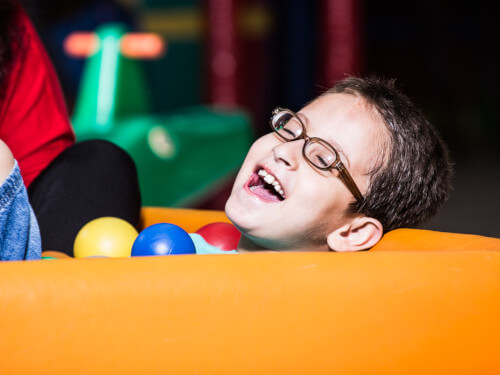
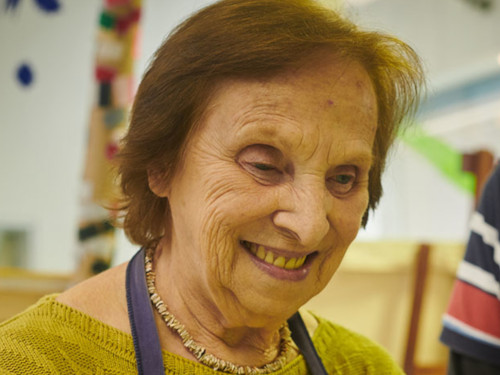
Laramara’s work began with children from 0 to 7 years old, being extended to other age groups, with greater monitoring, demanding the expansion of activities and programs for other age groups.
In 1996 and 1997, with new demands, the educational project was expanded, developing programs and activities focused on the professional world, and in arts and culture for young people and adults. As a result, the Training for Job Market (PPT) and Artistic Expression (PEA) Programs were born, currently combined in the Youth and Adults Program (PROCEJA).
With a pioneering spirit, we brought to the country the manufacturing of the Braille machine and long walking stick, important for the education and rehabilitation of visually impaired people. In our work, we have partnered with private companies and public organizations to deliver a significant number of this equipment to needy families throughout Brazil.
LARAMARA consolidates, every year, as a civil society organization active in the cause of visual impairment. Legitimized by the group it represents, the visibility of its actions in the field of Defense of the Right of the Visually Impaired Person is recognized in the exposure of problems and needs; in the search for improvements and solutions; in collaboration and partnership with other organizations and public services; in referring users to access rights and in participating in councils and commissions that discuss public policies.
By increasing its power of action and promoting greater citizen participation of people with visual impairments in decision-making, LARAMARA contributes to the strengthening of a more democratic, transparent, and participatory political culture. In addition, its Center for Attention to People with Visual Impairments develops social assistance actions that seek to strengthen family and community ties, autonomy, and full and effective participation in society. These actions are structured in services, programs, and projects, offered free of charge.
The Center is divided into two sectors, according to the demands of each age group, namely:
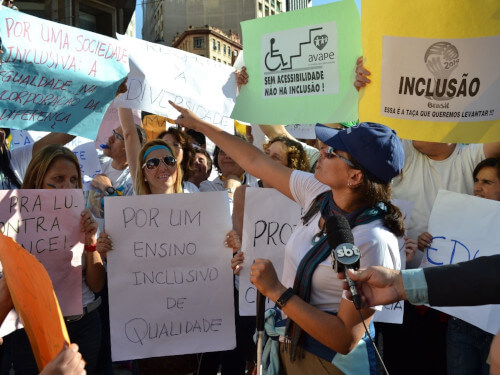
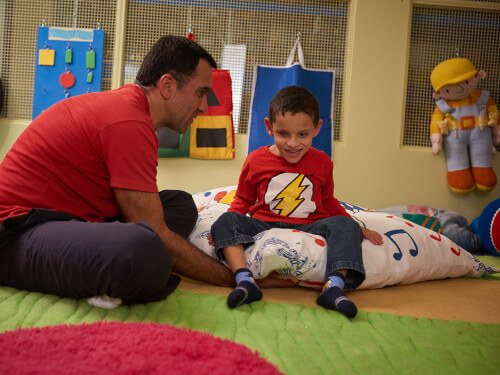
The socio-educational assistance in this age group is carried out weekly, in groups of up to 8 children or adolescents, lasting 4 hours. In this period, direct care takes place, records of the evolution of each user and interdisciplinary discussions, which guarantee the integrality of the actions of specialized care. The specific needs of the visually impaired, such as orientation and mobility, autonomous living activities, the development of visual efficiency, the functional use of other perception channels, access to the Braille System and others, are addressed in the context of the intervention plan of the group. Sociocultural and leisure activities such as commemorative parties, picnics at Parque da Água Branca, visits to the Football Museum, among others, are part of the service, as well as monitoring of school inclusion, in periodic meetings held at the institution. In addition to direct intervention, we carry out, when necessary, referrals for the acquisition of specific resources and for assistance in other support networks. From the age of 4 years or when it is not necessary to participate in the described structure, users can be referred directly to specific assistance in: Autonomous Living Activities, Braille or Low Vision, Soroban and Orientation and Mobility. These services are also carried out weekly, in groups of up to 03 users, lasting 1 hour and a half.
The service structure offered to young people and adults is characterized by a living space that includes Art and Culture Workshops (Dance, Drawing and Painting, Sculpture, Musicalization, and Guitar); courses, computer workshops and others; courses aimed at the preparation for job market and training for citizenship: such as the Autonomy and Independence courses; Citizenship and Social Rights; Computing; English; Job Market, Life Project; Quick Massage and Reflexology Course; specialized assistance in Autonomous Living Activities, Orientation and Mobility, Braille and Musicography; sociopolitical activities; socio-cultural and socio-educational activities (through Literomusical Soirees, Film sessions with Audio Description and outings to cultural spaces such as theaters, operas, concerts, shows, exhibitions, lectures, parks, etc.) and participation in Psychosocial Support Groups. Users can have daily or weekly appointments, or 2 to 4 times a week appointment. The duration of activities on each day can vary from 1 to 3 hours. Most courses and workshops have a semester duration.
